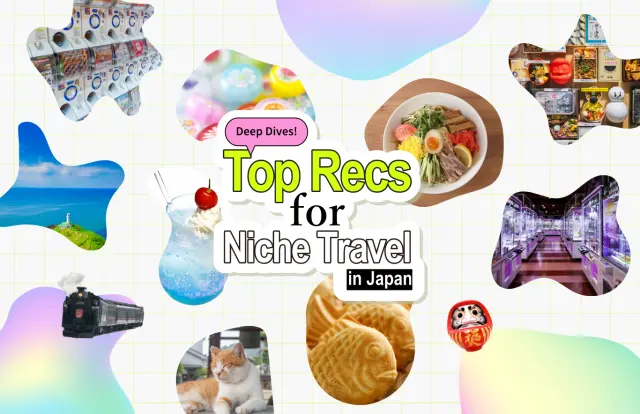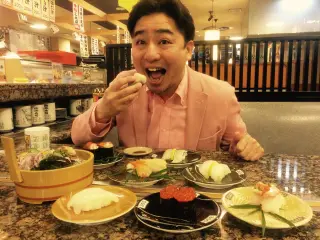
Kaiten Sushi Superfan Recommends: The Deeper You Know, the Deeper the World of Conveyor-Belt Sushi-and 9 Must-Try Local Sushi Picks
Conveyor-belt sushi (kaiten sushi) was born about 70 years ago and is now recognized as a signature element of Japanese food culture. Watching a colorful parade of sushi glide along the lane while you decide what to take and pick up your favorites yourself is pure excitement. This time, guided by Nobuo Yonekawa-a conveyor-belt sushi critic who has adored kaiten sushi since childhood and has visited more than 5,000 restaurants-we invite you into a world of kaiten sushi that is deeper than you might realize.
This Is How Conveyor-Belt Sushi Was Born
Conveyor-belt sushi began in Showa 33 (1958), the same year Tokyo Tower was completed, the Crown Princess was chosen, and the 10,000-yen note was issued. It is said that Yoshiaki Shiraishi, who ran a stand-up sushi shop in Osaka, toured a beer factory and took inspiration from the way beer moved through the production process on a conveyor belt.
At the time, Mr. Shiraishi’s shop offered four pieces of sushi for 20 yen and was thriving, but with too few chefs he struggled to handle the flood of orders. During that factory tour he realized, “If we put sushi on a conveyor belt and circulate it, we can serve many customers even with a small number of chefs-and guests can pick the toppings they like.” From there, after repeated trial and error, he developed a conveyor-belt system specifically for kaiten sushi. Over about ten years, he completed the now-standard “conveyor-circulating dining platform,” obtained a patent, and in April 1958 opened the first Mawaru Genroku Sushi in Higashi-Osaka.
Later, the concept was exhibited at Expo ’70 in Osaka (Showa 45, 1970), which helped kaiten sushi gain nationwide recognition and spread across Japan.
First Encounter at Age Four: A Lifelong Love of Conveyor-Belt Sushi
I have always loved sushi, and when visiting my grandmother, we would order delivery and eat sushi served in a wooden tub. The moment that pulled me into the world of conveyor-belt sushi was also at age four, during Expo ’70 in Osaka. I visited Genroku Sushi at the Expo site, met kaiten sushi for the first time, and was shocked. “The sushi is going around!” I thought, laughing.
By the time I was five the following year, a Genroku Sushi had opened in Ikebukuro, Tokyo, where my grandmother lived, and she often took me there. Until then, dining out meant eating a kids’ meal at a department store cafeteria and collecting the little flags stuck in the rice. To that routine, the joy of going to a place with “sushi that goes around” was added. Back then, sushi meant delivery with a fixed lineup of toppings, but at kaiten sushi you could eat as much as you liked of the toppings you liked. That joy easily beat my flag collection from kids’ plates.
From then on my focus locked onto kaiten sushi. When I moved to Gotanda in fifth grade there was a Genroku Sushi there too, and kaiten sushi became part of everyday life. After I left home for college and started living on my own, I moved nearly ten times, and one of my criteria for choosing an apartment was “whether there’s a good kaiten sushi place nearby.” As a student I also drove around Japan twice a year, visiting local kaiten sushi restaurants wherever I traveled.
It was really, truly fun.
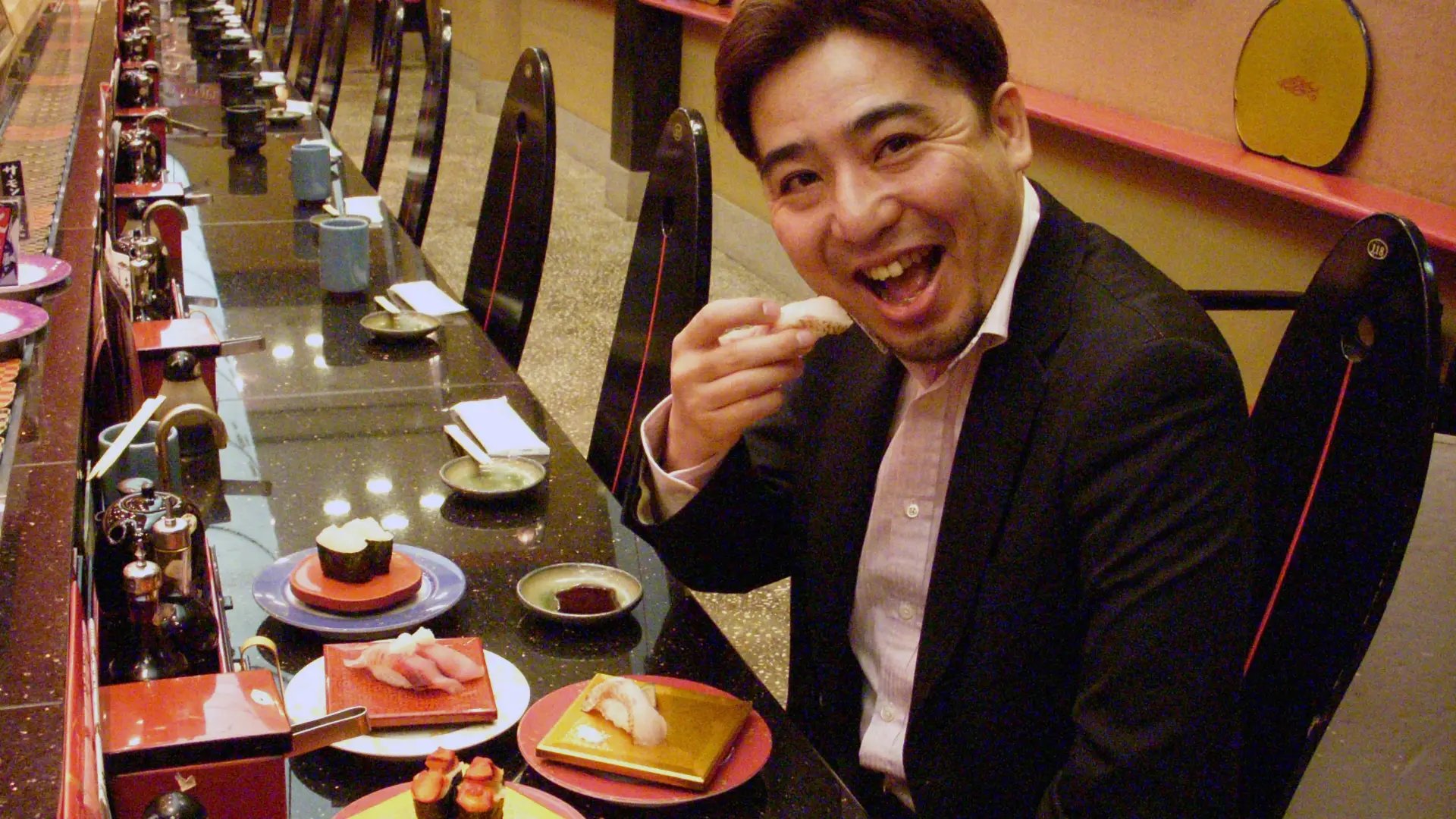
A Conveyor-Belt Sushi Restaurant Is a Culinary Amusement Park!
Kaiten sushi has many charms. First, what it serves is sushi, which remains firmly at the top of Japan’s favorite foods and is loved by all ages from children to seniors. Even people who are not fond of raw fish can enjoy kaiten sushi thanks to its wide selection of menu items, making it an all-rounder that welcomes everyone. Then there’s its ease and casual feel.
Across nearly 70 years, kaiten sushi has evolved by adapting to social changes and shifting times. There was an era of “cheap and low quality,” but that is a thing of the past. Today, it is both reasonably priced and genuinely good, easy to walk into yet comfortable to stay in-a combination of casualness plus added value that is one of its core attractions. And, of course, there is the entertainment of watching plate after plate circle past on the lane.
Just like choosing an attraction at a theme park, that delicious moment of scanning the rotating offerings and wondering which to eat first is irresistible. This is a unique appeal you will not find at other types of restaurants.
Enjoying beloved sushi easily and casually, with a sense of excitement, is what makes kaiten sushi an amusement park for food.
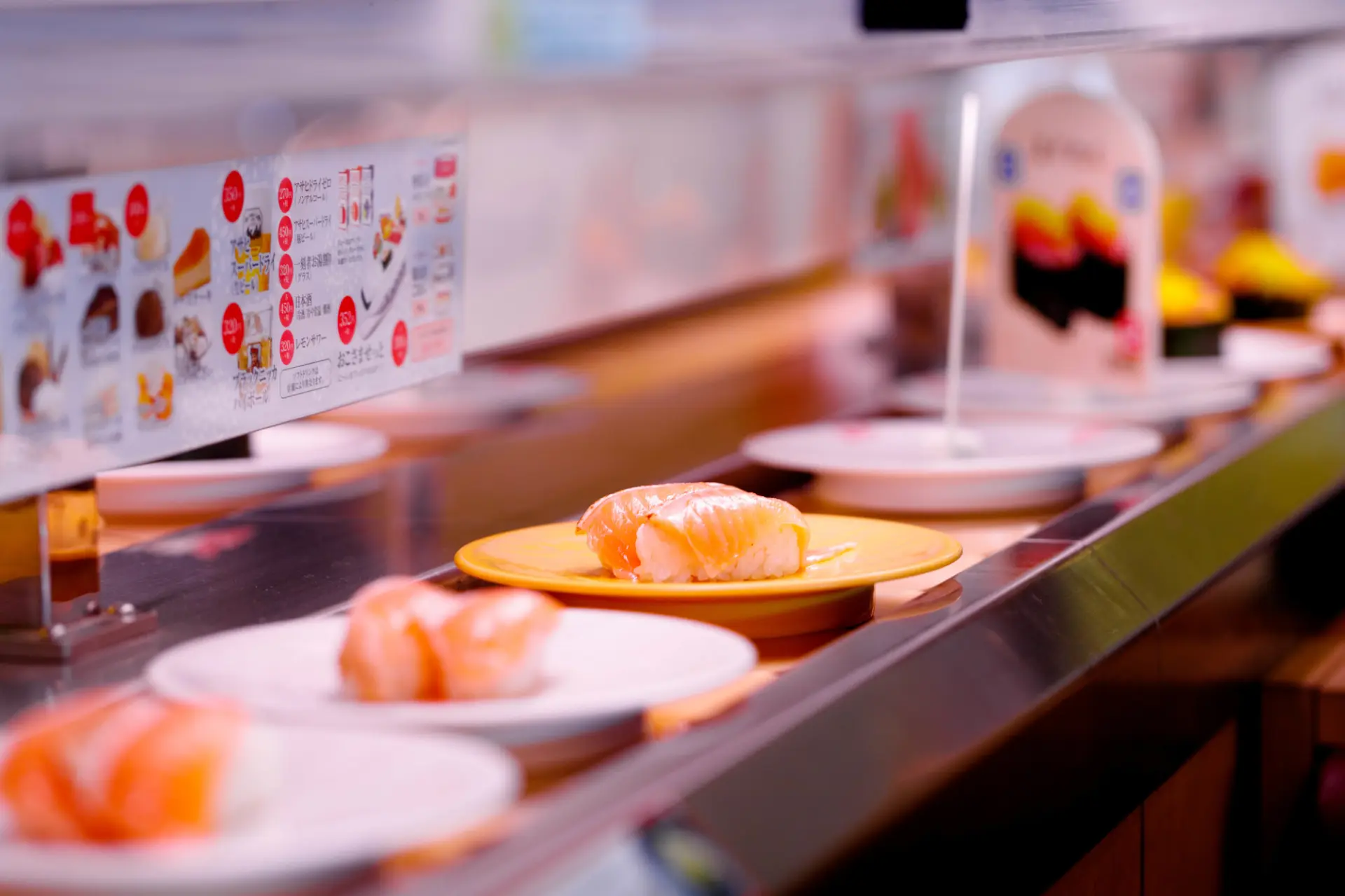
It’s Not True That “Conveyor-Belt Sushi Is the Same Everywhere”!
Many people unfortunately think, “Kaiten sushi is more or less the same wherever you go in Japan.” That may be true if you only imagine the big national chains. But all over the country there are places serving sushi you can only eat in that location at that time of year. These are “local kaiten sushi” restaurants.
There you will find sushi made from fish you may never have seen or heard of before-namera, arakabu, soi, gasu shrimp, Donchicchi, and more. For example, in autumn in Hokkaido you can find shishamo from Mukawa, in winter in Hokuriku you can find “Kobako-gani” (female snow crab) that is served for only seven weeks a year, and in summer in Hokuriku you can find live hoya. These are time-limited local tastes you can only experience on the spot.
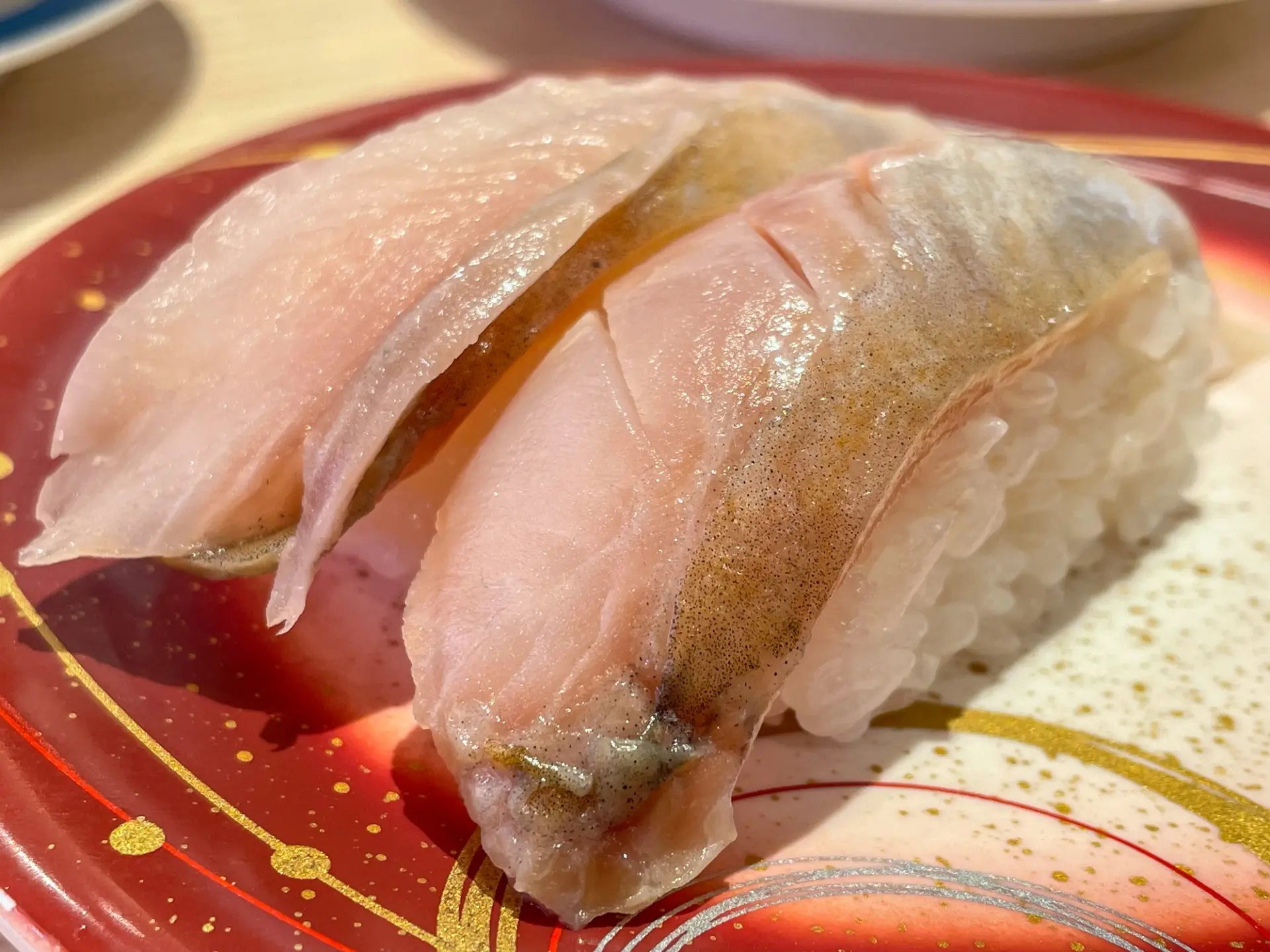
Make Local Conveyor-Belt Sushi the Very Goal of Your Trip!
The great charm of local kaiten sushi is that it is a food experience you can only have “in that season, in that place.” Travel purposes and pleasures differ by person, but food weighs heavily for most of us. That is why I urge you to make local kaiten sushi a goal of your trip. You might hesitate-“Use one of my precious travel meals on kaiten sushi?”-but there is more than enough value to justify it. As I mentioned earlier, today’s local kaiten sushi is no mere fast-food place for cheap sushi.
Beyond sushi, there are superb à la carte dishes. You can enjoy sashimi from fish you would almost never encounter in everyday life and creative plates featuring local ingredients-food experiences you can have “only here.”
Many restaurants also focus on local sake, so pairing local drinks and dishes to savor the region’s flavors is highly recommended.

Worth Going Out of Your Way For: 9 Local Conveyor-Belt Sushi Restaurants
When asked about my favorite sushi topping, I always answer, “What I want to eat depends on the region and the season.” Sushi made from seasonal fish and local ingredients, finished with local methods, is my greatest joy. Here, based on my own experiences, I have carefully selected recommendations by area from among Japan’s many local kaiten sushi restaurants. I hope you will feel for yourself that kaiten sushi is not all the same.
1. [Hokkaido] Hakodate Marukatsu Suisan Main Branch (Hakodate, Hokkaido)
A Famous Place to Fully Enjoy Live Squid, a Hakodate Specialty
Hokkaido is home to so many superb kaiten sushi restaurants that it is called the “Yokozuna of Eastern Japan” for kaiten sushi, yet this shop in Hakodate is uniquely precious for being the only place in the country where you can eat live squid sushi all year round.
Inside the restaurant is a huge live tank dedicated to squid, and when an order comes in they take a squid out of the tank and prepare it to serve. The translucent flesh-something you can never see unless it is prepared on the spot-is artistry itself. The hallmark of delicious squid texture is usually that crisp snap when you bite, but here your teeth gradually sink into the flesh and the very idea of squid is turned on its head.
It is a kaiten sushi restaurant that could only exist in a region famed for squid.

2. [Tohoku] Sushi Seijiro FES”AN Branch (Morioka, Iwate)
Local Sushi That Lavishly Showcases Tohoku Ingredients
“Sushi Seijiro” could be called the “champion of Tohoku.” Owned by a seafood company headquartered in Morioka, Iwate, it naturally offers excellent fish, but what truly stands out is its local sushi built on Tohoku’s ingredients. Creative and rare offerings abound, such as “Grilled Corn with Butter Soy Sauce” made with the Dakekimi brand of corn, “Seared Maesawa Beef Nigiri,” and “Live Hoya Nigiri.” In May 2025, at the 10th All Japan Conveyor Belt Sushi MVP Championship, the manager of the FES”AN branch won first place, so be sure to watch the chefs’ superb skills as well.
*The FES”AN branch now uses a touch-panel ordering system.
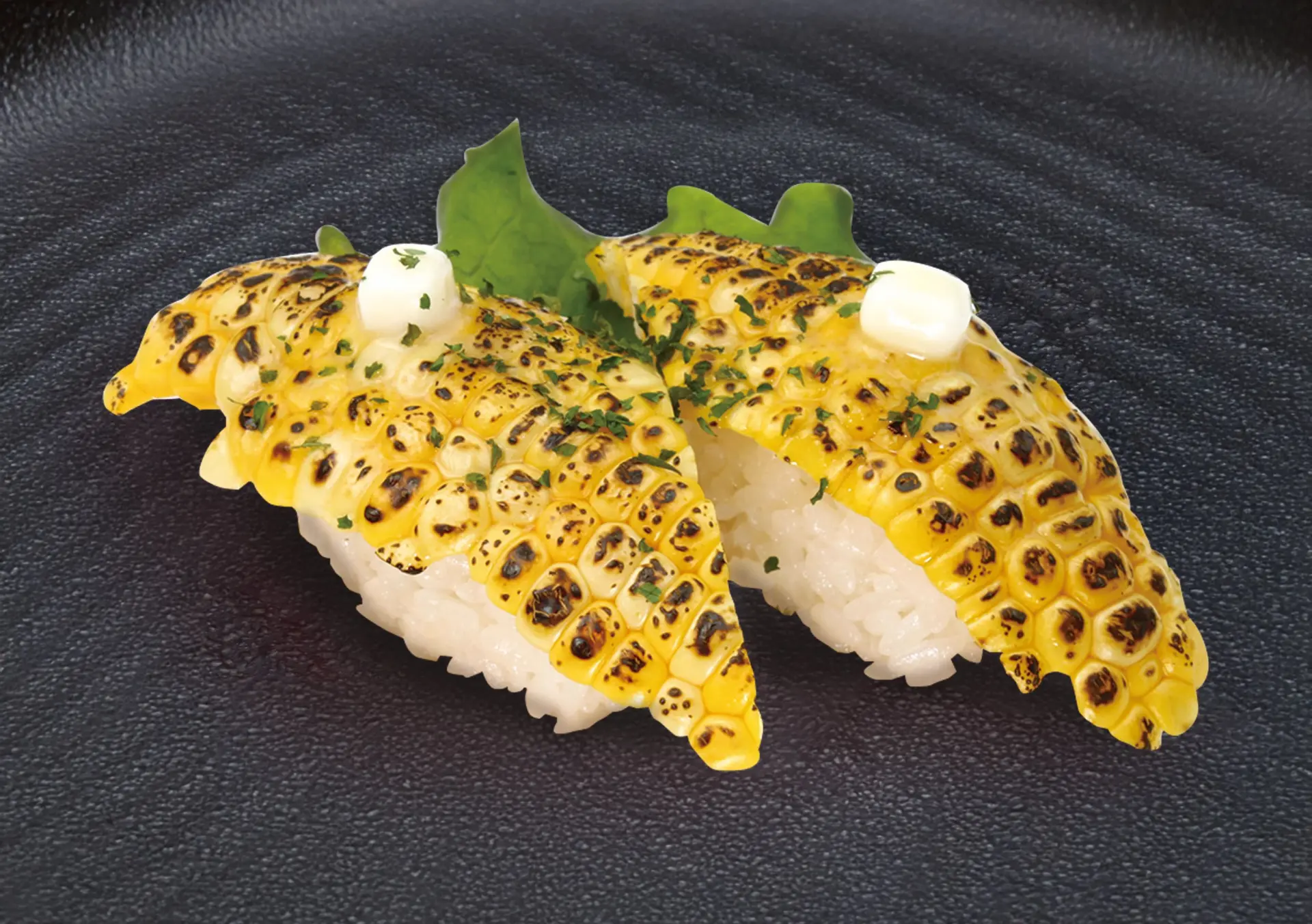
3. [Kanto] Maguro Tonya Ichimon Isezaki Main Branch (Isesaki, Gunma)
Creative Local Dishes That Will Change Your View of Sushi
This is the place that impressed me most in recent years. You might wonder, “Sushi in land-locked Gunma?” Precisely because of that, their ingenuity in what they can do taught me for the first time what “local sushi” truly is.
Rather than merely using local ingredients, they co-develop items side by side with the producers behind those ingredients, creating “sushi with the producer’s face visible.” From black soybean natto and takuan to quail eggs, brand beef, and brand trout, the range is wide, and it is no exaggeration to call this the essence of “local sushi.”
“Gunma wo Nigiru Kizuna Moriawase,” which gathers all of those elements onto a single plate, is a signature platter you should not miss.
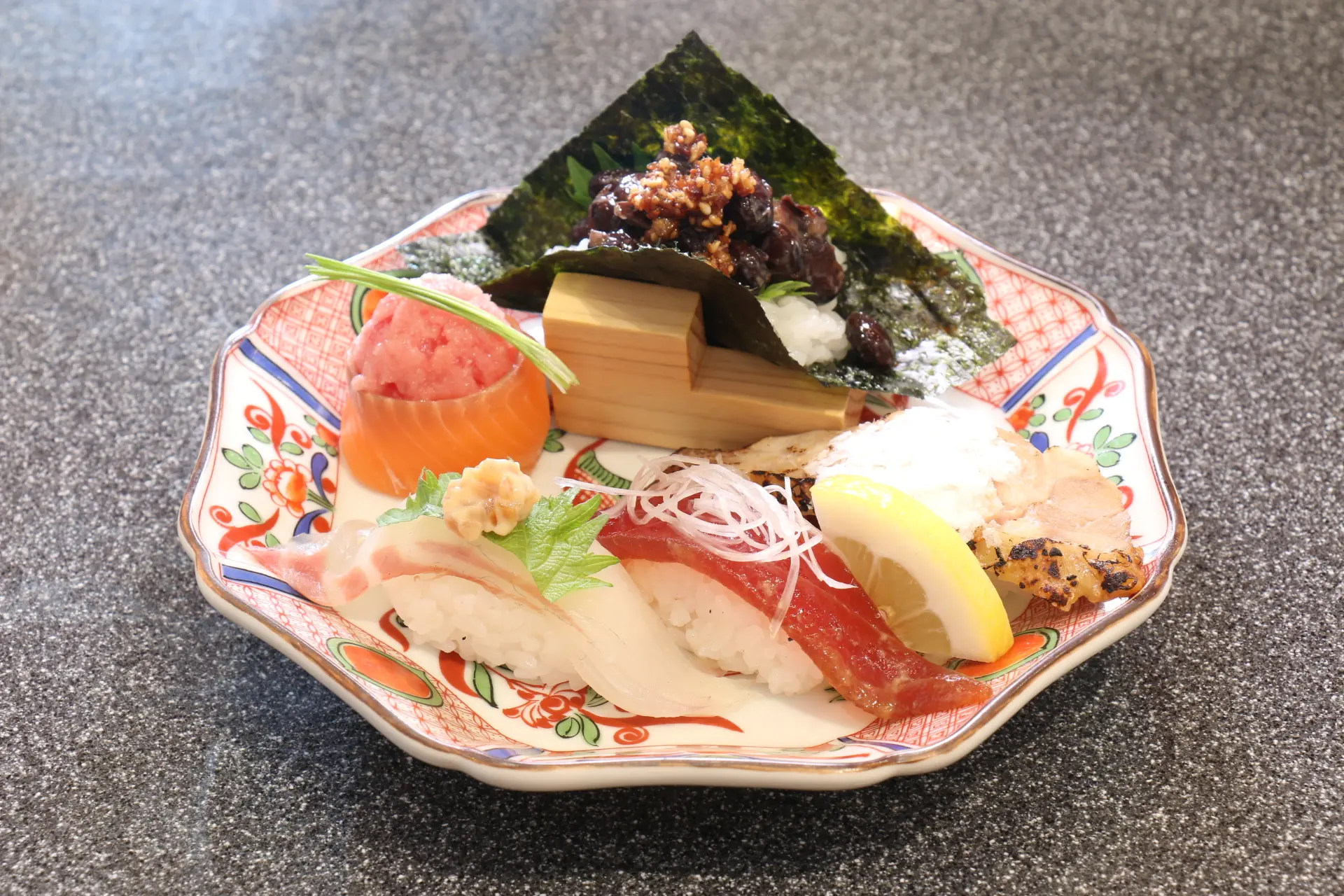
4. [Chubu] Kaisen Edomae Sushi Totomaru Chiryu Main Store (Chiryu, Aichi)
Japan’s No. 1 for Entertainment: A Five-Senses Kaiten Sushi
Aichi actually has the most kaiten sushi restaurants in Japan run by fishmongers and seafood companies, making it one of the fiercest battlegrounds with many high-level shops. Among them, “Totomaru” shines as an entertainment-focused kaiten sushi. Its concept is “a kaiten sushi for the five senses.” Being cheap and tasty is a given, but here you also see, touch, and hear as part of the fun. The “Warayaki Show,” held multiple times daily at every location, is especially popular, offering seasonal items in addition to the classic bonito.
There are plenty of participation-style events, making this truly an “amusement park of kaiten sushi.”
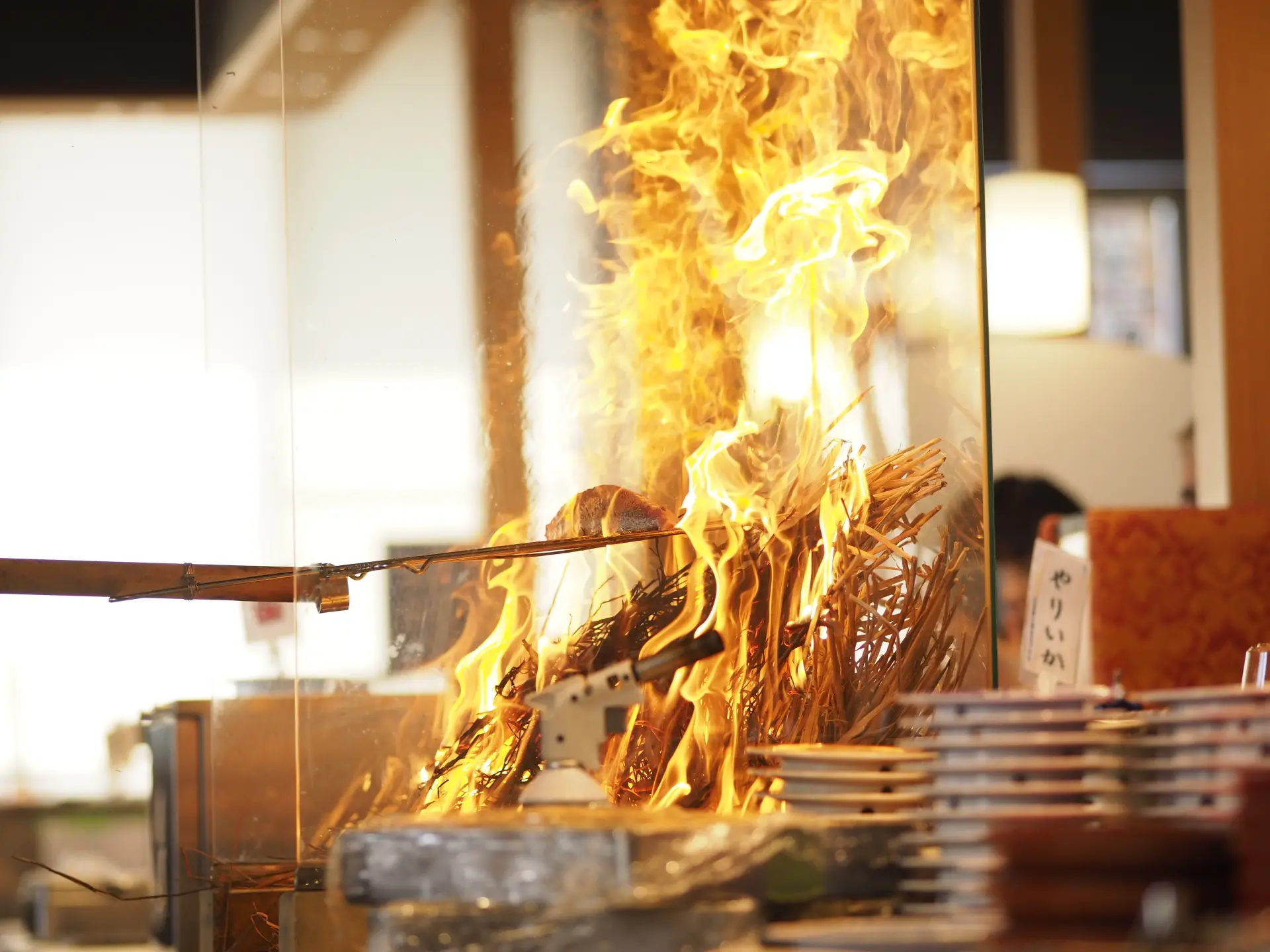
5. [Hokuriku] Kanazawa Maimon Sushi Main Branch (Kanazawa, Ishikawa)
The Byword for “Local Kaiten Sushi”: In Kanazawa, ‘Maimon’ Reigns
With locations across Japan’s major cities, “Kanazawa Maimon Sushi” leads the local kaiten sushi scene.
In a sense it has become an accessible way to taste Hokuriku flavors anywhere, but the sushi you can eat only when you are actually in Kanazawa is overwhelmingly special.
With Kanazawa Port nearby, fish landed just 30 minutes prior can come around on the lane. The sushi is extraordinarily fresh, and the crustaceans in particular taste on a different level than what you might eat at Maimon in Tokyo or Osaka.
From passion for kaiten sushi to technique and service, everything is top of the industry here.
“It is impossible to talk about kaiten sushi without visiting Kanazawa.” This is a restaurant that makes you feel exactly that.
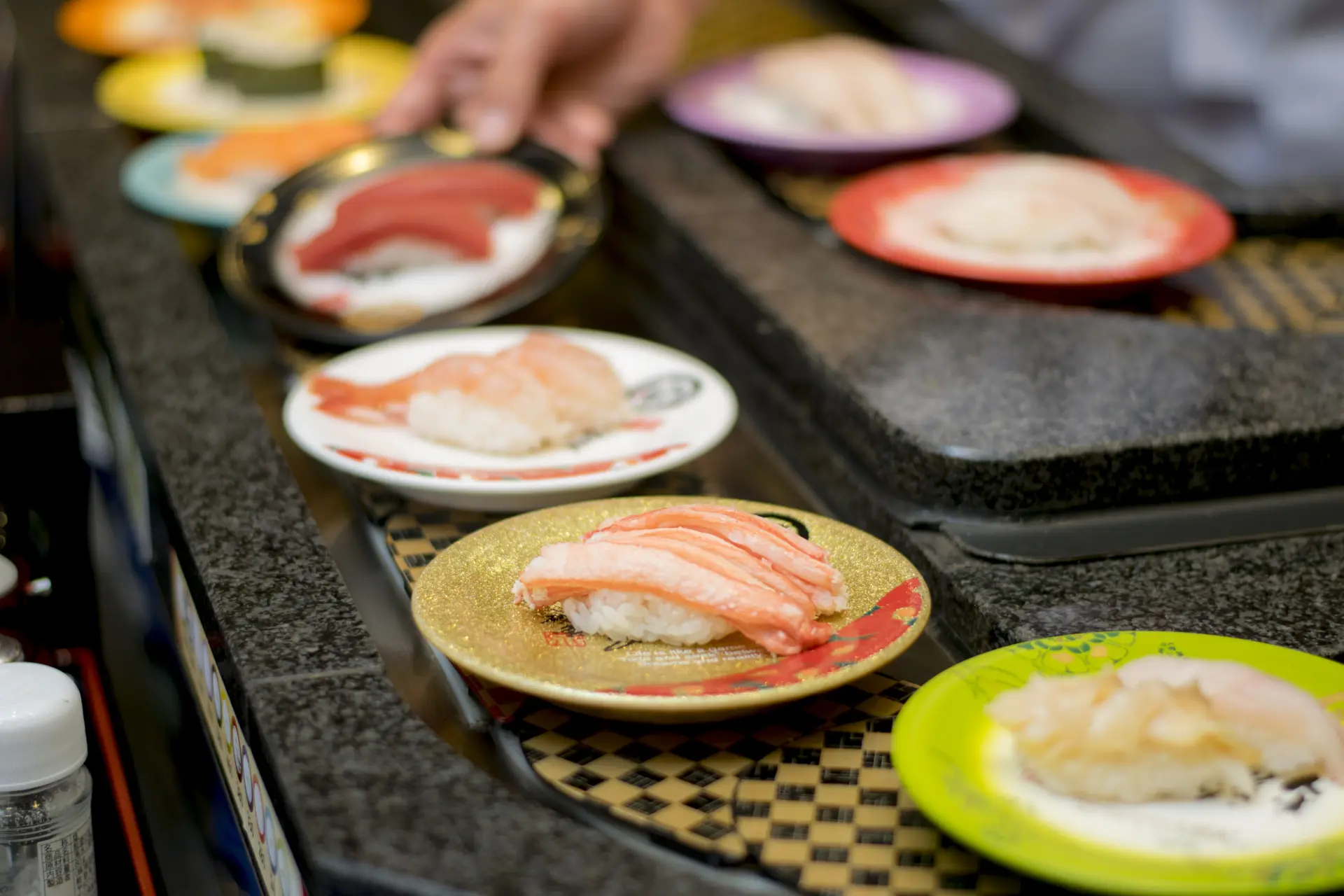
6. [Hokuriku] Iki-zushi Himi Conveyor-Belt Sushi Takaoka Branch (Takaoka, Toyama)
Morning-Caught Fish Direct From Himi Fishing Port-Always 10 or More Varieties
Hokuriku attention tends to focus on Kanazawa, but Toyama, with Toyama Bay known as a “natural fish preserve,” matches it as a hot prefecture for kaiten sushi. Among them, “Iki-zushi” ships more than ten kinds of fresh fish directly from Himi Port every day, a stalwart kaiten sushi restaurant that lets you taste Toyama in full.
Local kaiten sushi and same-day fish are inseparable, but few places in Japan source this many varieties daily. The “Himi Zukushi Mori,” packed with Himi’s morning-caught fish, is something you could happily eat every day.
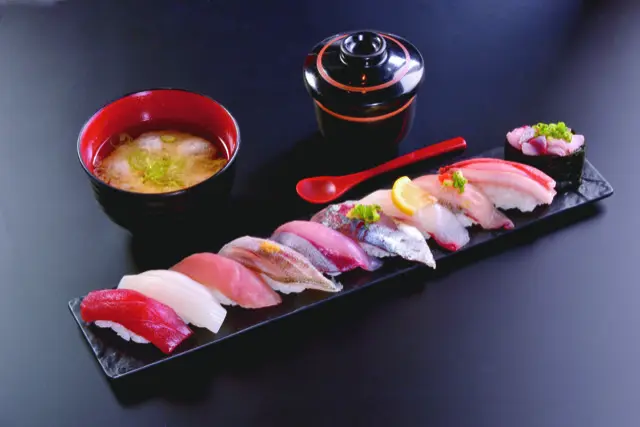
7. [Kansai] CHOJIRO Hozenji Flagship Store (Osaka, Osaka)
Seasonal Menus That Taste-and Look-Top-Tier
Osaka, the birthplace of kaiten sushi, has an exceptional shop of its own. In the atmospheric lanes of Osaka Minami’s Hozenji Yokocho, “CHOJIRO” offers exquisite sushi in a refined interior.
Most kaiten sushi brands invest heavily in seasonal menus that change every two to three months, but the completeness of CHOJIRO’s seasonal offerings is remarkable. The flavors are excellent, and the visual beauty is on par with high-end Japanese restaurants.
You will discover a new world of kaiten sushi here.
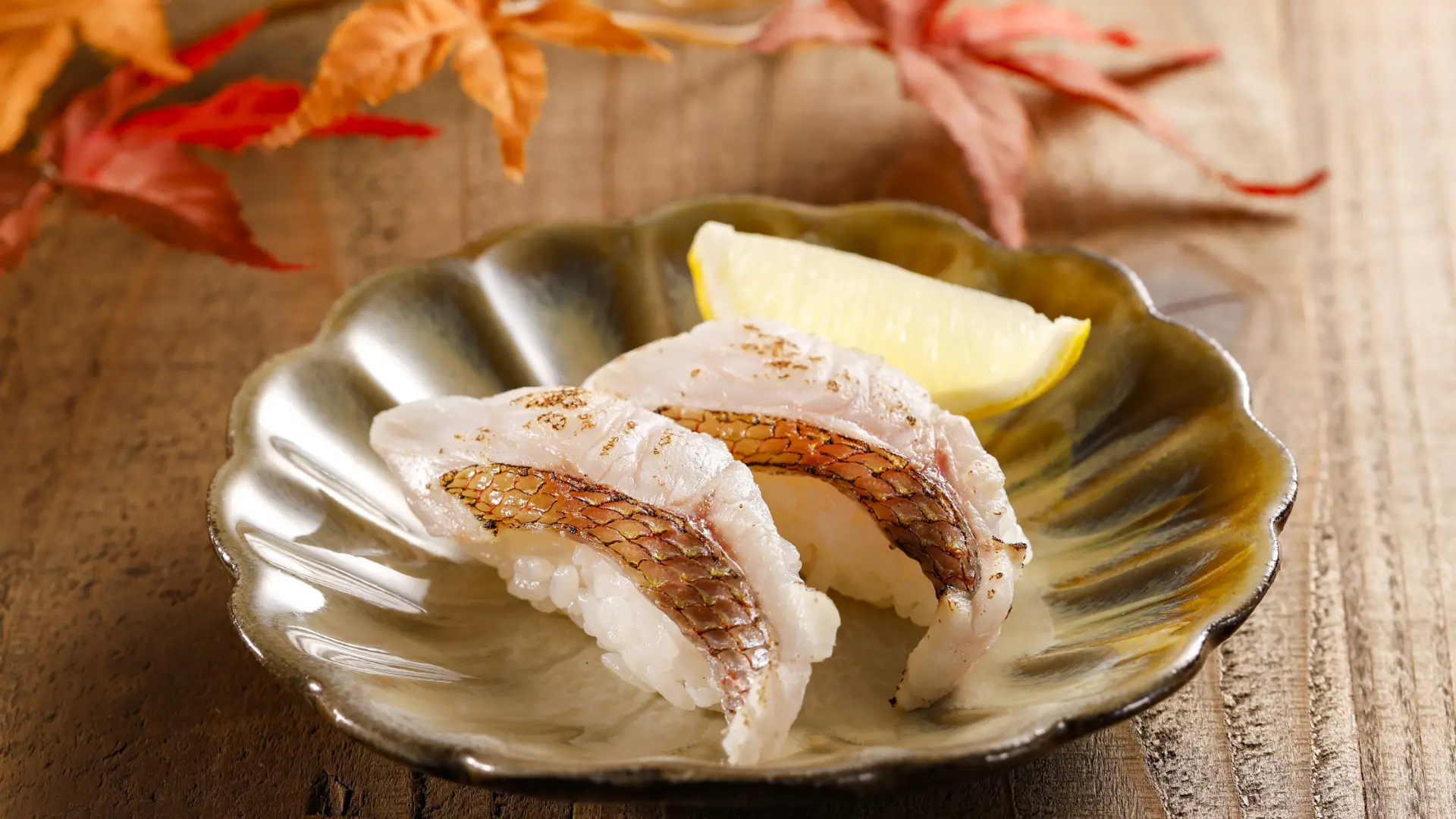
8. [Chugoku & Shikoku] Sushi Yukan Asahi youmemall Saijo (Higashihiroshima, Hiroshima)
A Rare Place Where You Can Eat Fresh Bluefin Tuna Year-Round
Hiroshima Prefecture has the highest overall level of kaiten sushi in western Japan, and here you will find a shop doing something groundbreaking. This is “Sushi Yukan Asahi,” a new format from “Sushi Yukan,” often called the “champion of the Chugoku and Shikoku regions.”
Its standout draw is fresh bluefin tuna. It is rare for a kaiten sushi restaurant to handle fresh (never-frozen) honmaguro at all and having it on the menu all year long is astonishing. There is more: a full-fledged sushi counter is housed in the same space.
The prices are very reasonable, making it an easy place for a debut at an authentic sushi counter, and you can choose by mood between kaiten sushi and the counter experience. It is the kind of place you would love to have in your neighborhood.
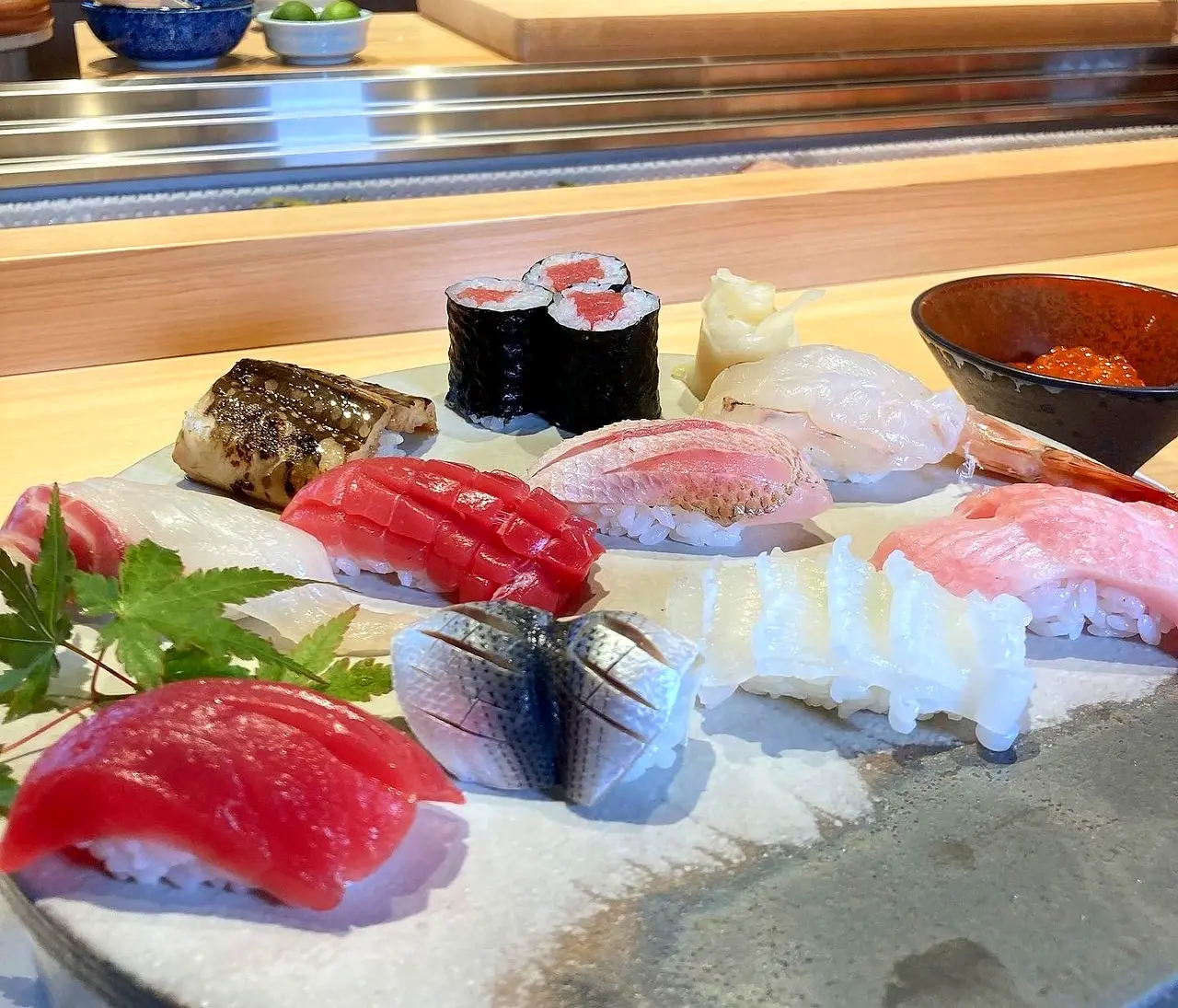
9. [Kyushu & Okinawa] Mekkemon Dolphin Port Branch (Kagoshima, Kagoshima)
More Than Flavor: People and Community-Experience Kaiten Sushi in Its Original Form
The original entertainment of kaiten sushi is lanes filled to overflowing with plates of sushi. Now that touch-panel ordering has become mainstream, restaurants where you can fully enjoy that thrill are rare, but at “Mekkemon” the original joy continues strong.
Alongside the lanes brimming with plates, another hallmark is the chefs who stubbornly uphold the motto “sushi hand-formed with heartfelt care.” They are energetic and cheerful, and the service is outstanding. There are even people who travel from all over the country just to see the chefs. Come taste the very essence of kaiten sushi.

Wrap-up
Local kaiten sushi lets you enjoy the essence of sushi easily and casually while experiencing flavors unique to a region. As Mr. Yonekawa says, it is well worth going out of your way to visit these places. On your next trip, consider adding kaiten sushi to your meal plan. A host of delights that may completely change the way you think about kaiten sushi will surely make your journey richer.
Supervising Editor
Conveyor-Belt Sushi (kaiten sushi) Critic
Nobuo Yonekawa
“Conveyor-belt sushi restaurants are culinary amusement parks!”

